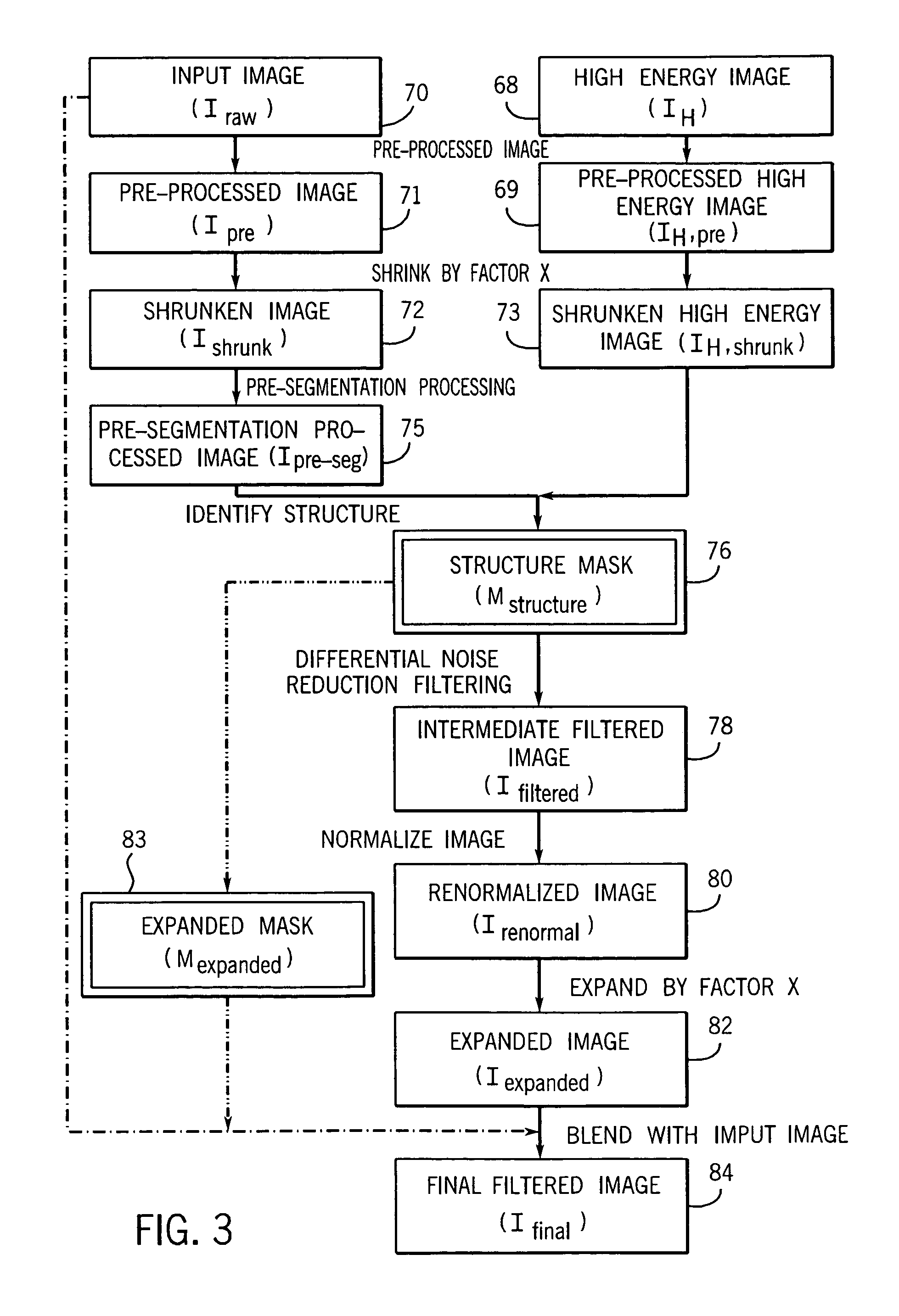Segmentation driven image noise reduction filter
a segmentation driven, filter technology, applied in image enhancement, image analysis, visual presentation, etc., can solve the problems of difficult to determine which of these parameters, or which combination of parameters, may be adjusted to provide optimal image presentation, and known signal processing systems for enhancing discrete pixel images suffer from certain drawbacks, etc., to achieve computational efficiency, maintain image quality, and enhance discrete pixel images
- Summary
- Abstract
- Description
- Claims
- Application Information
AI Technical Summary
Benefits of technology
Problems solved by technology
Method used
Image
Examples
Embodiment Construction
[0033]A highly abstracted rendition of image acquisition and processing by the preferred embodiment is illustrated in FIG. 17. FIG. 17 describes a preferred embodiment of the present technique whereby images are initially acquired by a dual energy X-ray system 12. The two acquired images are low energy image 67 and high energy image 68. Low energy image 67 is registered with respect to the high energy image in an optional motion correction process.
[0034]A dual energy subtraction process is then applied to registered low energy image 74 and to high energy image 68 to produce both a bone image 70 and a soft tissue image 70. Both the soft tissue image 70 and the bone image 70 are denoted by the same reference numeral because both images constitute an input image 70 which undergoes the claimed noise reduction process in the subsequent processes. Both input images 70 undergo noise reduction processing to yield final images 84, here denoted as final bone image 84 and final soft tissue ima...
PUM
 Login to View More
Login to View More Abstract
Description
Claims
Application Information
 Login to View More
Login to View More - R&D
- Intellectual Property
- Life Sciences
- Materials
- Tech Scout
- Unparalleled Data Quality
- Higher Quality Content
- 60% Fewer Hallucinations
Browse by: Latest US Patents, China's latest patents, Technical Efficacy Thesaurus, Application Domain, Technology Topic, Popular Technical Reports.
© 2025 PatSnap. All rights reserved.Legal|Privacy policy|Modern Slavery Act Transparency Statement|Sitemap|About US| Contact US: help@patsnap.com



